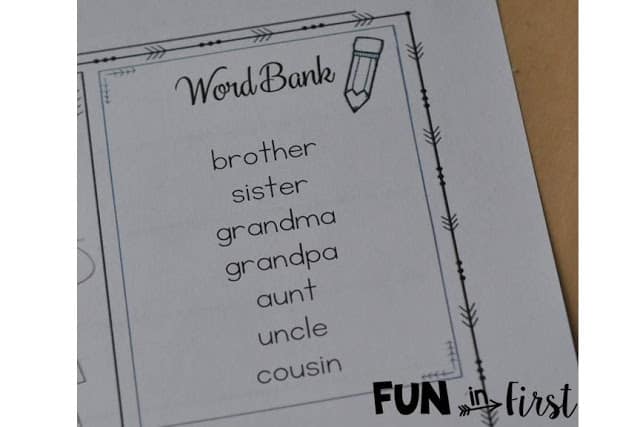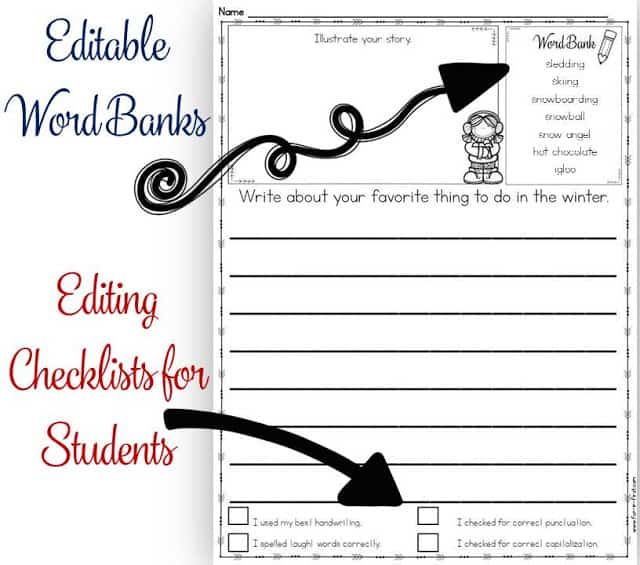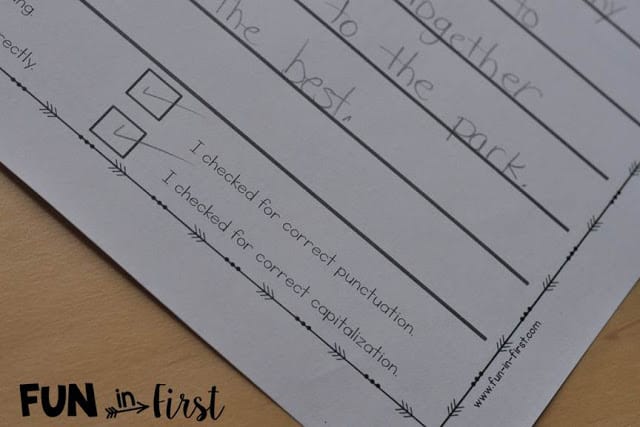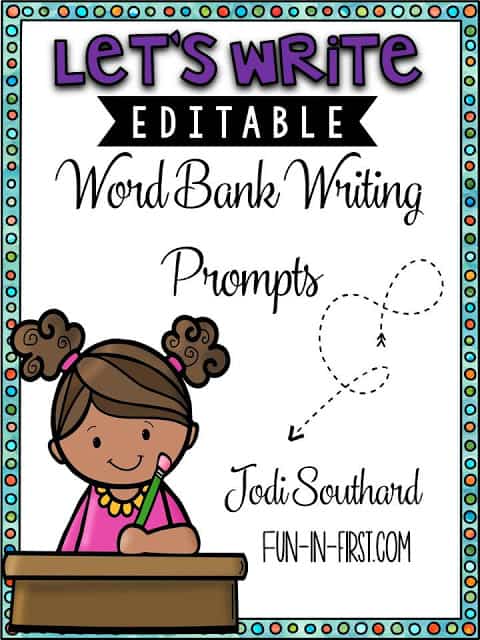In my previous role as a HLTA supporting SEN and EAL learners at an Enhanced Mainstream School, a huge priority was placed on using word banks because of their huge potential when supporting young writers.
Word banks are a written list of key subject-specific vocabulary words or phrases for students to draw from when they’re writing. They’re a simple, yet powerful teaching resource that familiarises pupils with a specific group of words and help promote independent work.
At Pobble, we believe children learn best when they are empowered with additional materials to support them with their writing. With that in mind, we’ve harnessed the power of word banks. On Pobble, you can find a selection of ready-made word banks, we’ve added these to lots of our premium lessons to support your teaching. We’ve also built a unique tool that allows you to quickly generate a colourful word bank yourself or easily edit Pobble Word Banks before printing and sharing with your class.
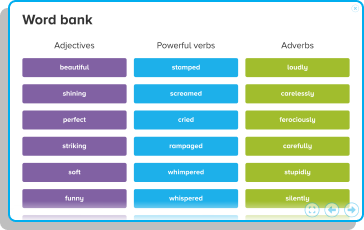
Most students, especially younger and more reluctant writers, can find it challenging to include specific details in their writing. Word banks can be used to enhance writing lessons and their versatility means they can be used for a variety of subjects. They offer many benefits to teachers and pupils alike, including:
- Vocabulary development — Word banks make it simple and exciting for pupils to discover new, creative and vivid vocabulary and then use these new words in their work; increasing and building on their vocabulary.
- Enable independent learning – Providing a Word Bank for students to use alongside their writing increases pupils’ independence. They can refer to the word bank if they’re unable to recollect the spelling of a particular word or if they need some vocabulary inspiration, rather than rely on teacher support frequently.
- Spelling support – As well as having spellings of keywords on hand, having a Word Bank introduces students to a strategy for checking the spelling of unknown words and allows them to begin editing their work.
- Creating confident writers – developing new vocabulary words, learning new spellings and working more independently improves writing confidence. Word Banks give pupils the confidence to develop their writing styles and become self-assured young writers.
How to use word banks in your class 💡
Word Banks are simple to create and print to support your writing lessons, but there are many other ways you could use them to support your teaching. Check out these ideas:
- Writing warm-ups — Brainstorm and generate word ideas as a class before inputting the words into a Word Bank for the class to use in their writing. This allows for every student to have an opportunity to speak, listen to others ideas and read and write new words related to their topic.
- Create your own – Ask your pupils’ to create their own word banks on your class topic. They can look in books, magazines, online, watch videos or speak to friends and family then write down words they would like to use in their writing. A perfect homework task!
- A classroom word book – every time you create a new Word Bank, print it out and combine it with others to create a word book. Your class can pick it up and have a flick through whenever they need some vocabulary inspiration.
- Word walls – As you work on a piece of writing, ask pupils’ to write any exciting, vivid or powerful words on a post-it note and add it to your classroom word wall. That way you build up a word bank collaboratively and students have quick access to the spelling of a word or vocabulary ideas while they are writing.
Easily create wonderful word banks to enhance your writing lessons on Pobble. Find out how here.
About Pobble
Pobble provides exciting daily writing resources to inspire your young writers. You’ll find incredible images with ready-made writing activities that engage and motivate your class, 365 days a year. Teachers, get started here.
So many times when my students begin their writing, they want help spelling certain words. I always remind them to not worry about spelling difficult words when they are writing. I don’t want them to shy away from using words that they are unsure about. My main focus during writing is the writing process, not spelling. {I want them to spell taught words correctly.}
I like to write some “common” words on the board that I know my students may need if we are writing to a particular topic. For this reason, I began creating writing prompts with Word Banks.
As I started working on these, I began to realize that I may want to edit these word banks for different students in my classroom. I also may want to change the list of words each school year depending on current situations.
So, the word banks on each of the writing prompts are completely editable to fit your needs.
Each of the 48 prompts also include an editing checklist for my students to check their work.
You can check out the entire packet by clicking on the picture below.
Disclosure: This article contains affiliate links for products we recommend.
A word bank is a list of words related to a topic or theme. Kids collect subject-specific vocabulary, organize it in a word bank, and then use it to enhance their writing.
This activity will help students create any number of nature-themed portable word banks they can use again and again when describing a place or writing nature-centered reports and poems. Encourage them to make word banks about nature topics that interest them or that you’re studying about in science or geography.
Make a Portable Word Bank
For each word bank your child wants to make, you’ll need a manila file folder. On the folder tab, write the theme of that word bank, such as “Seasons.”
Some children will enjoy gluing related magazine pictures to the front of the folder (showing sun, clouds, snow, etc.). On the front of the file folder, write “Seasons” (or “Words about Seasons”) as the title.
- Younger children’s word banks can be pretty general, such as Seasons, Plants, Animals, or Ocean.
- Older kids may enjoy creating more specific word banks that go along with their studies, such as Land Forms, Weather, Trees, Mammals, or Tide Pools.
- Teens’ word banks should be the most specific, as they zero in on even more focused topics, such as Storms, Conifers, Woodland Mammals, or Mollusks.
As they discover or think of related vocabulary, they can write the words on the inside of the file folder. Some students find it helpful to make columns by category and add specific terms under each appropriate heading.
For instance, a word bank about seasons could have columns for Spring, Summer, Fall (or Autumn), and Winter, while a word bank about mammals might be categorized by Carnivore, Herbivore, and Omnivore.
Expand Your Word Bank
Word banks are cumulative, so encourage your kids to build them over time. They can grow their nature word banks in several ways.
1. Be General or Specific
Either make a fairly broad word bank (about biomes, for example), or create specific word banks about individual biomes such as Tundra or Desert.
A basic word list featuring bodies of water might expand into several separate word banks (like oceans, pond habitats, or the Amazon). It’s always more meaningful to do this in conjunction with subjects you’re currently studying.
2. Commune with Nature
Visit a natural setting and collect nature words. Include plants, animals, and objects you can see. Listen for and jot down sounds of birds, water, and weather. Notice odors and fragrances that waft to your noses. Run your hands over surfaces and write down their textures.
3. Read About It
Collect brochures and pamphlets from nature centers, botanical gardens, visitor centers, aviary, or even your local nursery. Later, you can scour these resources for new words and add them to the word banks.
4. Forage Through Field Guides
Explore a field guide, nonfiction book, or nature website to find topical vocabulary words and terms about the subject.
5. Get Descriptive
Use a thesaurus to find interesting synonyms for common descriptive words like green, rough, or hot.
Write with Word Banks
Word banks make a great resource for students to draw from when they’re writing about a specific topic. Most students (younger and more reluctant writers in particular) can find it challenging to include specific details in their writing. Their new word banks will help them use precise and vivid vocabulary. And as a parent, you’ll be thrilled to see your kids using less-familiar words without constantly asking you how to spell them! This helps promote independent writing, especially in younger children.
Whether you store the word banks in an expandable file folder or punch holes and insert them in a binder, keep them handy so they’re accessible and, therefore, more likely to get used.
Pull out the word games for activities such as these:
- Preparing a science or nature report
- Describing a geological feature or phenomenon of nature
- Summarizing a field trip experience
- Writing stories that include descriptions of outdoor spaces, scenery, or weather
- Creating poetry (It’s fun, for example, to introduce onomatopoeia when discussing nature sounds like the “boom!” of thunder or the “crackle” of leaves. Invite your children to write their own individual poems, using their word bank as a resource.
- Writing vocabulary-rich sentences about a science or nature topic you’re learning about (perfect for younger learners)
How else do you use word banks?
-
in
How-tos
,
Tips
by Jimmie Quick
word bank for Ancient Greek architecture
If you use notebooking for narration, you realize that the assignment you are giving your children is quite complex. It’s really a writing assignment in which they have to consider organization, spelling and mechanics, and capitalization as well as the facts they are narrating.
One of the things you can do to help your child write good summaries on his notebooking pages is to discuss what the main ideas are before he even starts writing. As you talk it over, write down some key words to serve as a word bank.
For maximum benefit, have the child write the word bank. (But be sure to check it for spelling and capitalization.) However, writing the word bank for the child is also acceptable and can quicken the process to get on to the notebooking page.
As the student writes his notebooking page, the word bank serves as a reminder and helps him focus on the key ideas so nothing is left out. Word banks are also helpful with reinforcing new vocabulary. Another perk is for the weak speller; a word bank gives an easy place to check the spelling of new words and unfamiliar names.
Try a word bank this week when you implement notebooking in your homeschool and let me know how it goes for you. If you already use word banks, please share your experiences in a comment.
-
-
Jimmie Quick
Jimmie is now a veteran homeschool mom. Her daughter Emma is a student of the sciences at a large university in Illinois. Her guide to notebooking—Notebooking Success—guides you through notebooking: what it is; how to use it; how it fits a Charlotte Mason, classical, and textbook curriculum; tips for getting the most educational value from it; and much more. It comes bundled with several bonuses, including a small set of generic notebooking pages that can be used with any topic.
Word banks are useful tools to help improve children’s writing in KS1 and KS2. Find out how to create one at home and make expanding vocabulary a whole-family project!
What is a word bank?
Word banks are quite simply lists of words to support children with their writing. These will vary according to the age of the child and the task given.
How are word banks used in KS1?
In Year 1, a teacher might ask a child to re-write Little Red Riding Hood. To help them with their spellings, they might give them a bank of words at the bottom of the page, such as: ‘wolf’, ‘grandmother’, ‘forest’ and ‘basket’.
Start your child on a learning programme today!
- Weekly English, maths & science worksheets direct to your inbox
- Follows the National Curriculum
- Keeps your child’s learning on track
There are software programmes that give children word banks so that they can create a story by clicking on certain words. This helps them with their decoding skills (ability to look at a written word and say it out loud) and also helps them with composing a piece of writing, without having to worry about spelling or handwriting.
Word banks can also be used to help children to be more creative. A teacher might be focusing on adjectives in a particular lesson, so they may ask children to write a description of something using a given bank of adjectives.
How are word banks used in KS2?
As children move into Key Stage 2, they are expected to start using powerful verbs and adverbs. Some writing tasks include word banks to support children in being creative with their writing.
Word banks can be a good way of helping children to improve their writing by increasing their vocabulary; word banks offer some extra support.
Some teachers encourage children to make word banks on the wall, so that a list of adjectives, powerful verbs or adverbs become part of the display for children to see every day. Often they encourage children to add to these lists with words they have thought of or come across. This way the display becomes a collaborative effort where rich and interesting vocabulary can be shared.


